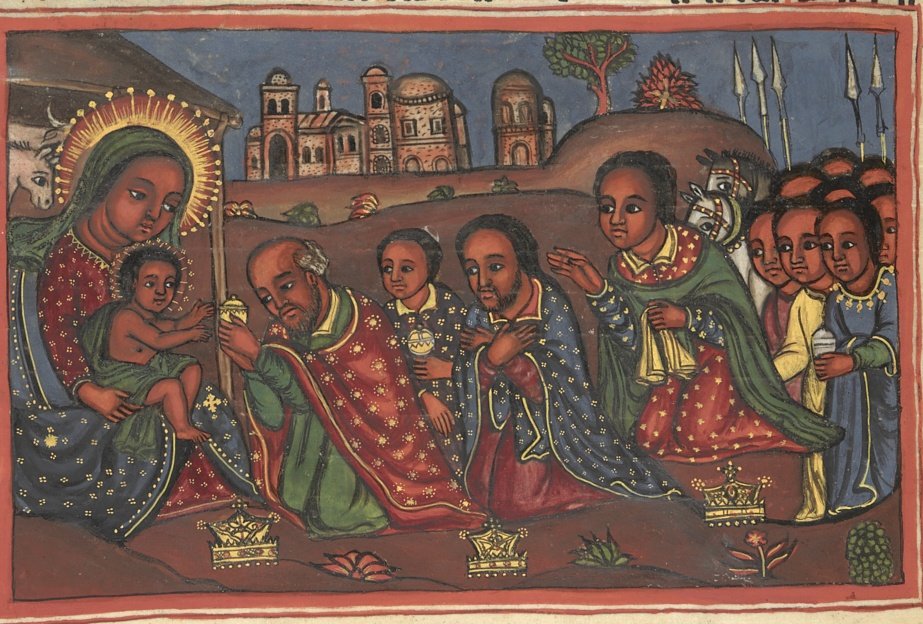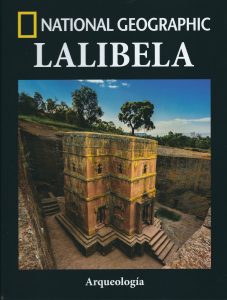
According to Ethiopian tradition, when Christ was born, King Bazen was reigning in Aksum, an enigmatic character whose name only appears once in the Ethiopian king lists. For the rest, he does not appear cited in any other source, neither epigraphic nor numismatic.
Who was this king Bazen then? We simply don’t know. Nor can it be affirmed that he even existed, or that his name is not the corruption of another king’s, which is also plausible. In this case, we would be talking about Wazen (Ousanas in Greek), whose numismatic collection is very abundant.
In Aksum, his supposed tomb is preserved, which Juan José Ruscalleda visited some time ago, sharing a series of very interesting images about its current state. Today it is one of the most visited places in the old capital.
And yet, Bazen is associated with the Biblical episode of the Magi. Why? Difficult to know, since he does not even appear mentioned in the abundant Ethiopian texts that speak of the mäsäggelan). It is an invention, whose roots are difficult to trace, which incardinates Bazen as one of the Three Wise Men simply because, as we have said, his reign coincided with the birth of Christ.

The Adoration of the Kings, or rather, of the Magi, refers to the visit that several Persian priests made to the Child Jesus according to the New Testament account (Mt, 2: 1-12). With them they carried three kinds of gifts: gold, frankincense, and myrrh. Despite the fact that the Gospel does not provide much information about them, new traditions soon appeared indicating that the visit took place when the child was two years old, or that they established the number of magicians from three, the number that is most popular today, to twelve . Also the name of the archangel who announced their birth varies: in some texts it was Raguel, in others Gabriel or even Mikael. In most cases the fact that the star guides them is maintained, but in some manuscripts in the center of the star an image of the Virgin with Child is represented.
Starting in the 14th century, in Western Europe each of the three kings was given a different origin, each representing the three continents known at the time. Baltasar represents Africa, so his face is always dark. This is reminiscent of the famous legend of Prester John, the mythical priest-king who ruled a powerful Christian empire that was identified with Ethiopia during the Late Middle Ages.
A curious legend is the one that ensures that they were among the first consumers of coffee (which actually began to be used centuries later), since they drank it to stay awake during the trip to Bethlehem. According to tradition, the names that receive the three times the coffee is served, Abol, Tona and Baraka, honor the Three Wise Men. If you ask any Ethiopian, they will answer without a doubt that the three Magi were from their country.
Bibliography
- Lozano Alonso, M. (2019). Pedro Páez y las Fuentes del Nilo Azul. Diplomáticos, misioneros y aventureros en la Etiopía de los siglos XVI y XVII. Madrid: Fundación Universitaria Española.
- Phillipson, D. W. (2012). Foundations of an African Civilisation: Aksum and the Northern Horn, 1000 BC-1300 AD. Boydell & Brewer Ltd.
- Witakowski, W. (2007) «Magi». In: Encyclopaedia Aethiopica, vol. 3. Wiesbaden: Harrassowitz Verlag. Pp. 634, 635.




 https://orcid.org/0000-0003-2855-3195
https://orcid.org/0000-0003-2855-3195
Let not spend time urging please. The same gifts the twelve wisemen presented to baby Jesus are the same gifts the queen of sheba of Ethiopia had presented to King Solomon many years before during her visit to Jerusalem. Mrryh. Gold and Frankincense (goods that in abundant in Ethiopia during this period). The fact that baby Jesus relocates to Africa and not to Persia soon after their visit too gives us a clue of their origin. Ethiopian kings traveled from different parts of ancient Ethiopia to present the gifts to the Christ child to fulfill the prophecy of their sages. Maṣḥaf Kebur (መጽሐፍ ክቡር), an Amharic source published in 2008/9, lists the names of the three wise men and the kings who accompanied them to Jerusalem. The first wise man was Agoja-Jabon; with him were three kings, namely Abol, Tona and Baraka. The second was Magal who had with him Kings Makdas, Awra, and Murno. The third wise man was Agabon who was accompanied by Kings Hajabon, Abulsalam and Arstatalu. The King of Kings of all the sovereigns was Atse Bazen, son of Nalk. According to the narrative translated from the Ge’ez manuscripts, it took two years for the sovereigns to arrive safely in Jerusalem